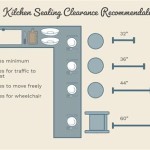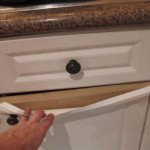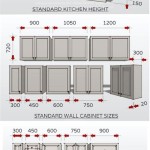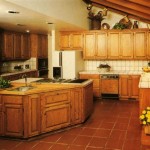Kitchen Cabinet Carcass Material: Choosing the Right Foundation
The kitchen cabinet carcass, the structural framework that holds your cabinet doors and shelves, plays a crucial role in the overall durability and longevity of your kitchen. Selecting the right cabinet carcass material is essential for ensuring a robust and functional storage solution that will withstand the rigors of daily use. This article will delve into the different types of materials commonly used for kitchen cabinet carcasses, exploring their respective advantages and disadvantages to help you make an informed decision.
Plywood: The Industry Standard
Plywood has long been the industry standard for kitchen cabinet carcasses due to its exceptional strength, stability, and moisture resistance. Constructed from thin layers of wood veneer glued together with alternating grain directions, plywood exhibits remarkable dimensional stability, minimizing warping and cracking. Its inherent moisture resistance makes it ideal for humid kitchen environments, where exposure to steam and splashes is common. Plywood also offers excellent screw-holding capabilities, ensuring robust construction that can accommodate heavy items.
However, plywood can be more expensive than other materials, and the quality can vary significantly based on the type and grade of wood used. The presence of formaldehyde in some plywood is a potential concern for some homeowners, though the use of formaldehyde-free plywood is becoming increasingly common. Plywood also requires careful handling and sealing to prevent moisture penetration and subsequent damage.
Medium-Density Fiberboard (MDF): An Affordable Alternative
MDF, a wood-based panel product, is becoming increasingly popular for kitchen cabinet carcasses due to its affordability and smooth, consistent surface. Made from wood fibers bonded together with resin under high pressure and heat, MDF offers excellent density and uniform texture. Its smooth surface makes it ideal for painting or laminating, allowing for a wide range of aesthetic options.
Despite its affordability, MDF has a lower density than plywood, making it less resistant to moisture and prone to swelling and warping if exposed to excessive humidity. It also lacks the strength of plywood, potentially making it less suitable for supporting heavy items. Additionally, MDF is not as environmentally friendly as plywood, as it is typically manufactured from fast-growing trees and requires significant energy consumption.
Particleboard: An Economical Option
Particleboard, another wood-based panel product, is a low-cost option for kitchen cabinet carcasses. Made from wood chips or sawdust bonded together with resin, particleboard is lightweight and readily available but lacks the strength and moisture resistance of plywood or MDF. Its susceptibility to moisture makes it unsuitable for applications requiring high humidity tolerance, such as kitchens.
Particleboard also has a lower density than plywood and MDF, making it less durable and susceptible to scratches and dings. It's generally not recommended for high-traffic areas or for cabinets that will be subjected to heavy use. Despite its affordability, particleboard may require additional reinforcement and careful handling to ensure longevity.
Solid Wood: A Luxurious Choice
While less common for kitchen cabinet carcasses due to its high cost, solid wood offers exceptional beauty, durability, and natural warmth. Constructed from single planks of wood, solid wood provides a unique and aesthetically pleasing finish that can enhance the overall ambiance of your kitchen. Its durability and strength make it an excellent choice for high-end kitchens where quality and longevity are paramount.
However, solid wood is susceptible to warping and cracking due to its natural tendency to expand and contract with changes in humidity. It also requires regular maintenance to prevent moisture damage and maintain its beauty. The high cost of solid wood may not be feasible for all budgets, making it a niche choice in the kitchen cabinetry market.
Choosing the Right Material
Ultimately, the best material for your kitchen cabinet carcass depends on your specific needs, budget, and aesthetic preferences. Consider the following factors when making your decision:
Budget:
Plywood is generally the most expensive option, followed by MDF and then particleboard. Solid wood is the most expensive choice.Durability:
Plywood offers the highest level of durability, followed by MDF. Particleboard is the least durable option, while solid wood can be very durable if properly cared for.Moisture resistance:
Plywood is the most moisture-resistant option, followed by MDF. Particleboard is highly susceptible to moisture damage. Solid wood can be susceptible to moisture damage if not properly sealed and cared for.Aesthetic preferences:
Plywood and particleboard offer a wide range of finishes, while MDF offers a smooth and consistent surface. Solid wood offers a natural and unique aesthetic appeal.
By carefully evaluating your needs and budget, you can select the best cabinet carcass material for your kitchen, ensuring a durable and functional storage solution that will meet your expectations for years to come.

Kitchen Cabinets Design Materials Smith

7 Best Kitchen Cabinet Materials To Protect You From Poor Quality Horrors

Cabinetry Terms With Pictures A Guide To Understanding Kitchens

Plywood Carcass Material Acrylic Modular Kitchen Cabinets

7 Best Kitchen Cabinet Materials To Protect You From Poor Quality Horrors

9 Popular Kitchen Cabinet Materials In Malaysia

A Guide To Materials And Finishes For Kitchen Designcafe

Kitchen Cabinet Carcass Guide Why A High Quality Is Essential Lasting

Which Alternative Materials Could I Use For My Kitchen Carcasses Houzz Ie

Kitchen Cabinet Carcass Guide Why A High Quality Is Essential Lasting








